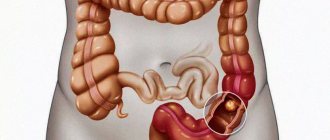This hormone is produced by the corpus luteum in the ovaries every month after ovulation and is responsible for regulating the menstrual cycle. Progesterone also helps the body prepare for pregnancy if the egg is fertilized.
After ovulation, the hormone progesterone causes the uterus to thicken and prepare to fertilize an egg. If the fertilized egg implants, it is responsible for maintaining the lining of the uterus throughout pregnancy. However, if the egg is not fertilized, the level of progesterone in the body drops, and this leads to the fact that women begin to menstruate. Progesterone is also responsible for breast growth during pregnancy. It also prevents lactation until the baby is born. Men produce a small amount of it, which contributes to the development of sperm.
What happens if a woman has low progesterone?
Lack or low levels of progesterone in the body can lead to heavy bleeding during menstruation. Because progesterone is an important hormone during pregnancy, women with low levels may have difficulty getting pregnant. As explained earlier, progesterone is responsible for stimulating the thickening of the uterus in anticipation of a fertilized egg. If the body has low levels of progesterone, the uterus is not thick enough to support implantation. Meanwhile, low levels of this hormone during pregnancy can lead to early labor or miscarriage.
Symptoms of low progesterone
Here are some symptoms that may occur if women have low progesterone levels.
Headache. Sometimes a headache or migraine is caused by a hormonal imbalance.
Mood swings. As women get older, progesterone production decreases and this sometimes leads to mood swings. This is because this hormone plays a vital role in maintaining a stable mood. So if you suddenly feel depressed out of the blue, it could be due to low progesterone levels.
Irregular periods. Low progesterone levels can lead to long or irregular menstrual cycles.
Decreased sexual desire. This hormone also controls your sex drive, with women specifically experiencing a boost in sex drive after ovulation. This is done by the body to increase your chances of pregnancy. If you have low progesterone levels, your libido will automatically decrease. It is for this reason that women's sexual desire decreases after menopause.
Weight gain. Progesterone is also responsible for regulating metabolism. Therefore, if you have less progesterone in your body, your metabolism may slow down, leading to weight gain.
Infertility. This female hormone helps you achieve and maintain a healthy pregnancy. If your progesterone level is below normal, you cannot get pregnant because the fertilized egg cannot implant in the uterus due to insufficient thickness of the endometrium.
Myomas. These are noncancerous tumors that develop in the uterus. They usually consist of smooth muscle cells and fibrous connective tissue. Although the exact cause of fibroids is unknown, it is believed that high levels of estrogen in the body may be a factor. When there is less progesterone in the body, estrogen levels increase and this can lead to fibroids.
Chest pain. Breast tenderness, also known as mastalgia, comes with a variety of symptoms. Fluctuating hormones sometimes lead to breast tenderness, and this may be due to low progesterone levels.
Gallbladder problems. The gallbladder contains receptors for progesterone, and low levels of this hormone can lead to problems such as gallstones.
Reasons why low progesterone
If you have been diagnosed with low progesterone levels, it may be due to
- The ovaries do not work properly: progesterone is produced and secreted by this organ.
- Menopause (after 45 years) or menopause.
- Toxinemia, blood poisoning, is the result of a local infection, usually bacterial, where harmful toxins are released into the blood and progesterone levels are reduced.
Diagnostics
The level of progesterone in the body can be found using a simple test known as a hormone blood test. In this test, a blood sample is taken and tested to determine the amount of hormone present. To correctly interpret the result obtained, it matters when your last menstruation began or ended, whether you are pregnant or not, and what medications, including hormonal ones, you take.
Why do you need progesterone during pregnancy?
In non-pregnant women, progesterone is produced in large quantities in the third phase of the cycle, which occurs after ovulation. It promotes endometrial growth and reaches its peak before menstruation. Then the concentration of the hormone drops sharply, which causes endometrial rejection, and menstruation occurs.
In a pregnant woman, everything happens differently: the corpus luteum continues to produce progesterone during the first 8 weeks of pregnancy, then this function is transferred to the placenta. Now the hormone maintains the normal condition of the mucous surface of the uterus, which should reliably hold the fertilized egg.
Low progesterone levels occur in women who are overweight and have diabetes, so they first need to monitor their hormonal levels.
Treatment for low progesterone
You may not need treatment if you are not planning to have a child. However, you can do the following things to naturally increase your progesterone levels.
How to increase progesterone naturally
1. Taking vitamins.
Increasing your intake of vitamins B and C (which are responsible for producing progesterone) may help. Foods rich in vitamin B include whole grains (brown rice, barley and millet), meats (red meat, poultry and fish), eggs and dairy products (milk, cheese), legumes (beans, lentils) and dark leafy vegetables (broccoli , spinach). Foods rich in vitamin C include black currants, citrus fruits - oranges, limes and lemons, berries, kiwi, chili peppers, broccoli, sprouts.
2. Consumption of zinc-rich foods.
You can also boost your progesterone levels by eating more zinc-rich foods, such as meat, shellfish (these are low-calorie sources of zinc), legumes such as chickpeas, lentils and beans, seeds, nuts, dairy products, eggs and whole grains.
3. Stress management.
Excessive stress leads to the release of cortisol (the stress hormone), which in turn reduces progesterone production. You can reduce stress and emotional tension in general by exercising, meditating, yoga, taking deep breaths, and avoiding caffeine and nicotine.
Hormone therapy
The use of natural or synthetic hormones may be indicated to treat certain symptoms of low progesterone, such as menstrual irregularities and abnormal bleeding. If you experience severe symptoms, you may be given a combination of estrogen and progesterone. Hormone therapy is also advice for women who are pregnant or planning to become pregnant sooner.
Progesterone levels after embryo transfer
Doctors recommend very carefully checking progesterone after embryo transfer, doing this on the day of transfer, then on days 3, 5, 7, 9 and 14. It is important to repeat the analysis many times, because even if the first 2-3 tests showed a good result, it does not mean that implantation has already taken place (this can happen up to 10 days inclusive).
To get the most accurate results, you need to donate blood in the morning, after 8-10 hours of fasting.
Progesterone should be maintained within normal limits, that is, not lower than 38.15 nmol/l (or 12 ng/ml in other units of measurement), but not higher than 57.8 nmol/l (or 18.2 ng/ml ).
The most dangerous situations are when the hormone level is low: there is a high risk of miscarriage. This should be corrected immediately with progesterone medications - in the form of injections, tablets or vaginal gel.
Less dangerous, but not very good when progesterone is elevated. It causes pathological changes in the endometrium, which also reduces the likelihood of implantation.
Diagnostics
Due to an incomplete understanding of the pathophysiology and the lack of an accurate method for diagnosing luteal phase deficiency, treatment is difficult. To begin therapy, the female body is first diagnosed.
To do this, the doctor collects an anamnesis, which includes the following information:
- complaints;
- medical history;
- menstrual functions;
- obstetric and gynecological history;
- life analysis.
Then the woman is examined. Attention is paid to the ratio of height and weight, distribution of adipose tissue, and vegetation on the body. During the month, a woman is recommended to measure her basal temperature so that the doctor can assess the onset of ovulation and the luteal phase.
A gynecological examination of the genital organs and an ultrasound examination are also performed. Be sure to donate blood for analysis to determine the level of follicle-stimulating and luteinizing hormone, estrogen, progesterone, inhibin, TSH, 17-OH progesterone, testosterone.
You will also need to perform a coagulogram, biochemical blood test and biopsy.
Laboratory blood test
The hormonal level in a woman's blood is measured several times. This is necessary to track production dynamics and identify pathologies. High progesterone is monitored by:
- 7 days before the start of the menstrual cycle (if the results are in doubt, repeat tests are taken);
- 7 days after the end of menstruation;
- After another 14 days;
- The last analysis is taken after 20 days.
Based on the results of the study, a conclusion is drawn about the quantity of the hormone produced and whether this can be considered a pathology. If so, the doctor will prescribe examinations from other specialists.
How to prepare for diagnosis
Having noticed symptoms of increased progesterone, a woman needs to undergo several blood tests.
To make the results as reliable as possible, it is recommended:
- Take the test in the morning, on an empty stomach;
- Do not drink coffee, tea, alcohol, or spicy foods the day before blood sampling;
- Do not smoke 1 hour before the procedure.
The patient’s main goal is to take the test in the natural state of the central nervous system, without external stimuli in the form of food, alcohol, or nicotine.
Folk remedies
The suggested remedies for lowering progesterone are listed for informational purposes. They can be used as an adjunct to a doctor's prescription, but not as a primary treatment.
Popular recipes for symptoms of excess progesterone:
- Mint and rowan tincture. For the tincture, use rowan flowers and mint leaves, which can be dried. 1 tbsp. l. plants are poured with 1 glass of boiling water. Within 30 min. The remedy is infused. 1 glass is taken in 3 equal portions per day, after meals.
- Rowan tincture. 2 tbsp. l. berries (frozen or fresh) pour 0.5 liters of boiling water. When the drink has cooled, drink it within 1 hour.
- Carrot seeds. For 40 gr. seeds you will need 3 cups of hot water, preferably just boiled. The product is infused in a dark place for 24 hours. One serving is taken during the day, 1 glass.
- Dried cloves. For 10 gr. spices use 1 cup boiling water. Leave for 30 minutes. Then the infusion is filtered and drunk in equal portions 4 times a day.
- Rowan flowers, 1st method. Two teaspoons of flowers are poured into 1.5 cups of boiling water. Leave for 1 hour. Strain and take during the day in 3 equal portions.
- Rowan flowers, 2nd method. As in the previous recipe, you will need 2 teaspoons of flowers. Place them in a saucepan and add 1 glass of water. Bring to a boil, simmer for 15 minutes. Take the decoction 1 day in advance, dividing it into 2-3 servings.
The course of therapy with folk remedies is longer than medication. Also, there is no guarantee that it will help if progesterone is high. Women who prefer traditional methods of treatment focus on their own well-being, determining when it is time to stop taking tinctures or decoctions. Unfortunately, this method is ineffective. Expecting an improvement in well-being, a woman may encounter a placebo. In normal treatment, the health status is assessed by repeat blood tests.











